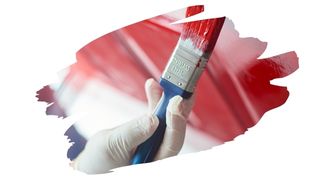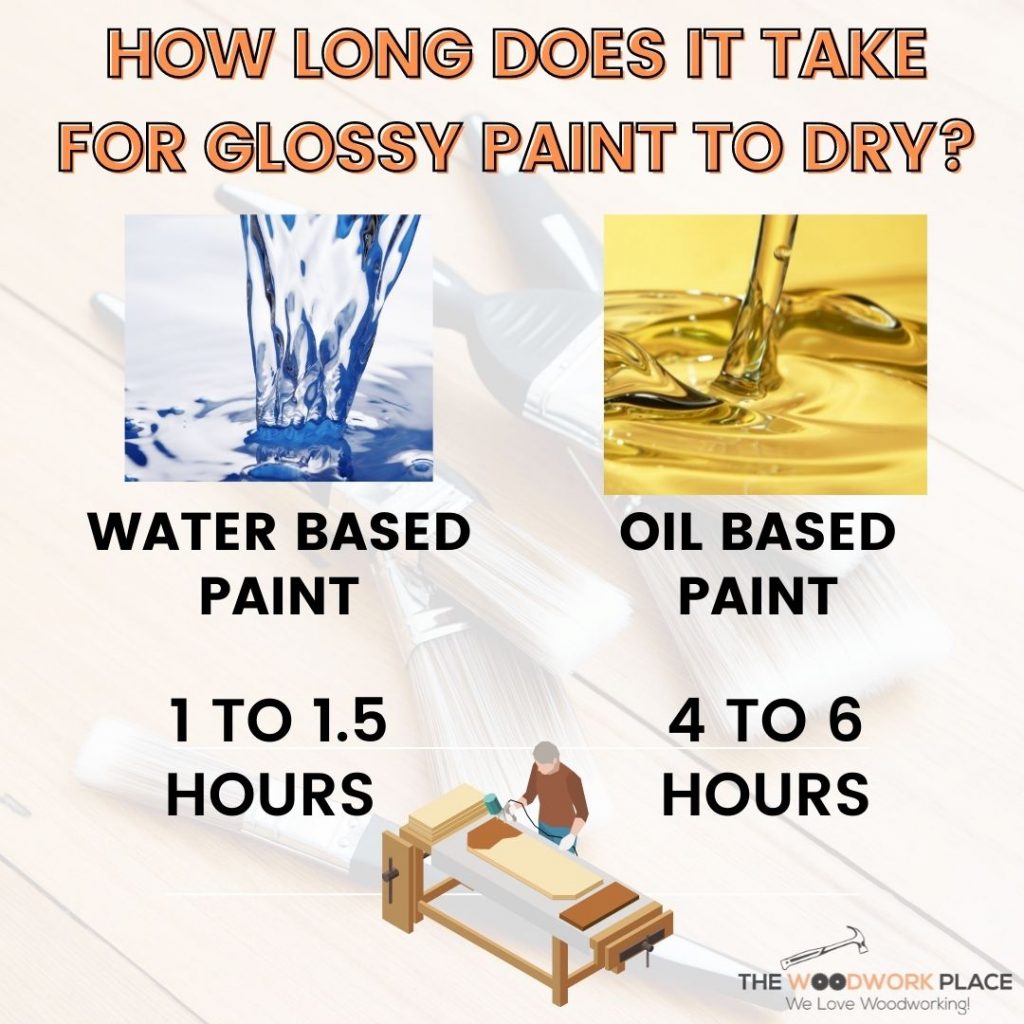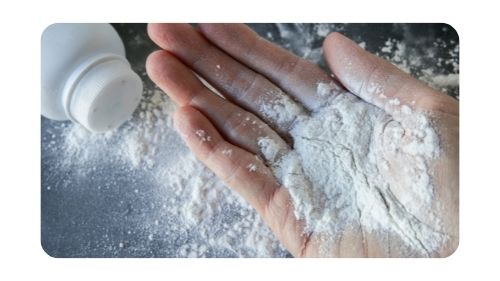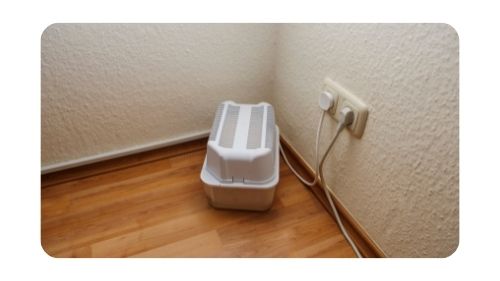There’s a little more to applying a coat of paint than most people think. From the primer, to the undercoat, to the sealer… each step is important if you want that paint job done right.
But, what happens when you find yourself sat around waiting for paint to dry (literally!).
Because, well, gloss paint should feel dry to the touch within a couple of hours at most. And when that paint is still wet? What could be preventing that gloss paint from drying?
There are typically 3 main reasons why gloss paint isn’t drying;
1). It’s been applied too thickly. Paint has difficulty drying if you apply too much of it in a single coat.
2). It’s been applied incorrectly; as in the paint was coated over primer too soon. Or a second coat of paint was applied before the first coat had a chance to dry.
3). There are environmental factors preventing that gloss paint from drying. Conditions such as extreme humidity, cold weather, and even low ventilation, all play a factor in drying times.
If any of these things sound like something that might apply to your paint finish, then you’ve come to the right place. So keep reading to discover how you can quickly fix a good paint job gone wrong..

This post may contain affiliate links to products that we receive a commission for (at no additional cost to you). Learn more here.
Okay, First Off, Why Is My Gloss Paint Still Sticky?
Well, it all boils down to how paint dries… and the type of paint you are using.
When it comes to painting wooden surfaces, there are two main types of paint that we use; oil-based paint and water-based paint.
Why Does Water-Based Paint Struggle To Dry?
Water-based paints, such as acrylic paint and latex paint, dry due to their water content.
The water in these water-based paints evaporates and leaves behind a resin. This resin is what makes up the dry paint left on the wall.
So anything that makes it difficult for water to evaporate, is going to also make it difficult for water-based paint to dry.
Which means things like too much water (a thick coat), humidity (moisture in the air), weather (not hot enough to dry), will all slow down water-based paints ability to dry efficiently).
But What If You Use An Oil Based Paint?
When it comes to oil based paint, this type of paint doesn’t rely on evaporation, (as there is no water involved). Instead, it relies on oxidation to dry.
Basically, this means that it undergoes a chemical reaction that hardens oil paint – turning it from liquid into a solid.
This chemical process is most effected by heat. Higher temperatures speed up the process, and lower temperatures – in turn – slow it down.
Related Post: Can You Mix Paint And Polyurethane? (Solved!)
Okay, So How Long Does It Take For Glossy Paint To Dry?
If you’ve been waiting for over 6 hours, (and paint is still wet to the touch), then it is taking too long.
Water-based glossy paints take around 1 to 1.5 hours to dry (although the exact time should be shown on the paint products container).
Oil-based glossy paints take four times longer than that, and clocks in with a 4 to 6 hours drying time.
How Long Does Gloss Paint Take To Dry On Doors? You should leave those doors open (and untouched) for up to 16 hours. This should allow the paint enough time to dry through.

Great! Next Question… How Can I Get Gloss Paint To Dry Faster?
Well it depends on why that coat of paint may be struggling to dry (and the type of paint matters too):
Applied Too Much Paint (Or Applied A Second Coat Too Soon)
This solution to this problem only works on water-based paints. And that solution is? Talcum Powder.
You can try using talcum powder to spot-blot select areas of tacky paint.

This involves sprinkling a very (very) light dusting of talcum powder on the tacky area. And then gently rubbing the talcum powder in.
The talcum powder should soak up some of the water from the paint, helping it to dry faster.
But, this only works if small sections of the paint job are still wet. If the entire board, door, or wall is wet, then throwing talcum powder at it isn’t practical.
Related Post: Wood Filler Showing Through Paint? Fix It In 3 Easy Steps!
Environmental Factors
First thing you need to check is room temperature. It goes without saying, but, paint dries faster in a heated room.
So water-based paints need temperatures of at least 50°F (10°C) to dry. While oil-based paints require a minimum temperature of 45°F (7°C).
Does Paint Dry Faster In Cold Or Hot Weather? Hot weather dries paint faster. That is, of course, provided that it is hot dry weather, and not hot and humid.
Also, both types of paint dry best in an environment that has humidity levels of 50% or less.
High humidity means moisture is lingering in the air. And all of the water in the air makes it difficult for the water inside paint to evaporate.
Will A Dehumidifier Help Paint Dry?
Yes, it absolutely will, if humidity is your problem. These machines will help reduce the moisture content in the room.

However, if humidity isn’t an issue, then you need to take a look at ventilation.
Air needs to be circulating if you want to help paint along (as well as prevent a build up of paint fumes).
So open some windows and doors, if possible, to help increase air flow.
Will A Fan Help Paint Dry?
Yes it can. A steady stream of hot air can improve ventilation and increase room temperature.
But be careful not to blow any dust and debris directly onto a still-wet paint job.
Can You Sand Tacky Paint? Best practice is to wait for the paint to dry first, before sanding it. Sanding tacky paint will ruin both the paint job and the wooden surface.
Related Post: What Causes Fuzzy Wood After Sanding? (And How To Fix It)
I’ve Tried Everything! Will Tacky Paint Eventually Dry Anyway?
In theory, it should do. But it will take a long, long time (comparatively). We are talking drying times as long as days – or even weeks.
This is especially the case if the problem, (preventing paint from drying in the first place), is still a factor.
Let’s Wrap This Up…
Remember, before you go adding another coat – or rushing off to grab a dehumidifier – make sure you’ve given paint enough time to dry on its own.
Popular paint types like acrylic and latex can take less than 2 hours, but oil-based ones can take up to 6 hours.
However, if you’re sure you’ve given things enough time, then the 3 best ways to get tacky paint to dry are; increase room temperature, increase air flow, and lower the humidity levels.



